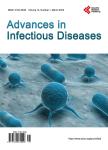Omicron Infections in Otolaryngology Practice: A Retrospective Observational Study on Testing, Symptoms and Vaccination Status
Omicron Infections in Otolaryngology Practice: A Retrospective Observational Study on Testing, Symptoms and Vaccination Status作者机构:ENT Medical Office Krefeld Germany Bioscientia MVZ Nordrhein Labor Moers Moers Germany
出 版 物:《Advances in Infectious Diseases》 (传染病进展(英文))
年 卷 期:2023年第13卷第1期
页 面:81-95页
学科分类:1002[医学-临床医学] 100214[医学-肿瘤学] 10[医学]
主 题:COVID-19 Omicron Variant Vaccination Effect Ct Value Clinical ENT Symptoms
摘 要:Background: With the appearance of the SARS-CoV-2 Omicron variant the high rate of vaccination breakthroughs showed that current vaccines against COVID-19 can no longer provide adequate protection against infection. However, it is still assumed that vaccination might have a positive effect on the course of the disease. In Germany, general practitioners and specialists are usually the first treatment providers for acute illnesses. In addition, patients with infections of the upper respiratory tract often primarily consult an ear, nose and throat specialist. Most of the Omicron-infected people have a mild course of the disease and, if necessary, receive medical care on an outpatient basis. Little is known about the effectiveness of corona vaccinations on Omicron infections in relation to the clinical symptoms. In our outpatient office, we recorded a sharp increase of corona positive Omicron-infections in the beginning of 2022, despite of vaccinations against COVID-19. In a retrospective analysis, we evaluated the data of our SARS-CoV-2 tested patients with regard to clinical symptoms reported and vaccination status. The focus was particularly on the question to what extent the vaccination status in the case of Omicron infections influences the symptoms of the disease. Methods: We retrospectively evaluated the data of all patients in the first quarter of 2022 who were suspected for COVID-19. At that time, the Omicron variant was dominant in Germany. Clinical symptoms, cycle threshold (Ct) values, and the vaccination status were recorded. Symptomatic patients who tested negative for SARS-CoV-2 served as a control group. Results: Of the total cohort (n = 353), 241 (68%) patients were tested SARS-CoV-2 positive. The symptoms of the corona-positive patients were essentially similar to those of a mild to moderate cold, but compared to SARS-CoV-2-negative patients (n = 69) with a clear shift in favor of fever (35% versus 16%), cough (76% versus 52%) and increased feeling of



